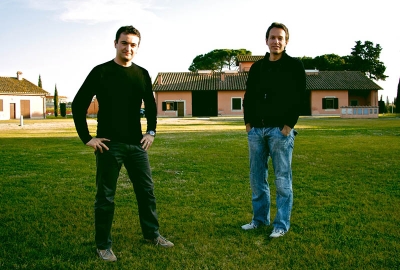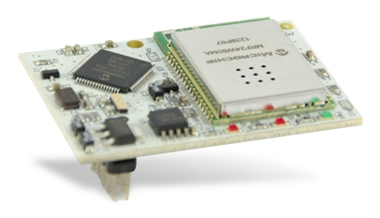- makeITcircular 2024 content launched – Part of Maker Faire Rome 2024Posted 2 weeks ago
- Application For Maker Faire Rome 2024: Deadline June 20thPosted 2 months ago
- Building a 3D Digital Clock with ArduinoPosted 7 months ago
- Creating a controller for Minecraft with realistic body movements using ArduinoPosted 7 months ago
- Snowflake with ArduinoPosted 8 months ago
- Holographic Christmas TreePosted 8 months ago
- Segstick: Build Your Own Self-Balancing Vehicle in Just 2 Days with ArduinoPosted 8 months ago
- ZSWatch: An Open-Source Smartwatch Project Based on the Zephyr Operating SystemPosted 9 months ago
- What is IoT and which devices to usePosted 9 months ago
- Maker Faire Rome Unveils Thrilling “Padel Smash Future” Pavilion for Sports EnthusiastsPosted 10 months ago
The Internet ON Things – openPicus brings the Internet into objects
After the smartphones revolution that led us directly to the internet in our pockets the next one is already in place a will bring the Internet directly into objects.
I often read lots of posts on a daily basis in which people try to define the Internet of Things: since a long time I personally prefer a slightly different definition: the Internet On Things.
It sounds better to me since it emphasizes the act of adding intelligence, smartness and value (via the internet) on top of existing objects.
Connecting an object to the internet, completely transforms the business model of those who produce it: from products offering to services. Just look at what happened for example in the field of storage: Dropbox created a cloud-based product and offers the user the ability to do what they should already be able to do (i.e. backup of your data) but in an automated, smart and secure manner, with a model based on subscriptions.
Freemium business model it’s increasingly dominating the market: provide the basics for free and overcome limitations via a paid/pro version: I think that the same could happen with connected objects.
An infinite number of creative possibilities exists to give new life to everyday objects in order to improve the interaction with the user, what’s commonly called Interaction Design: we must start thinking that the hardware can play a role in the market only if we think of it as part of a comprehensive experience made of social web, apps and real life.
This is why for us, Flyport – that we kept simple, easily programmable and natively connected to the Internet (Wi-Fi, Ethernet, GPRS and 3G) – is the enabler of the revolution, something that can give service designers, startupper and innovators a platform on which and with which to design new user experiences.
An example that I often recall is that of the smart umbrella stand. What seems an object with absolutely no intelligence can become a demonstration case that is key to understand the potential of the Internet applied to objects: you step near it on your way to the door and it lights up to remember you about the umbrella, in case it’s going to rain during the day.
How does it work? in the umbrella stand a Flyport Wi-Fi, mounted on an expansion board called Grove Nest, pilots a multi-color LED and a presence sensor. Flyport connects to the Internet and automatically downloads weather data. Easy and straightforward.
Equally interesting is the device that Evian, through creative Joshfire, created using our Flyport few months ago, a fridge magnet through which I can order my water supply: interesting, in this case, it’s how the designer identified the context in which the need arises and has designed a device that stands really there, just waiting to be used.
[iframe_loader src=”http://player.vimeo.com/video/43489401″ height=”349″ width=”425″ ]
Certainly these are only examples, but they demonstrate two fundamental concepts:
- The Internet ON Things is something real, tangible and useful when applied to real needs
- Modules like Flyport allow rapid prototyping of ideas but are mature enough to be used by customers to build commercial products
Prototyping is key as this market still is to be discovered completely and its radically innovative applications require the development of new methods to test ideas to the market with an experimental and lean approach, focused on learning from customers.
In our company we are focusing on this through three key aspects: ensure that Flyport has a simple programming environment by avoiding the necessity to deal with the challenges related to the management of the TCP / IP communication stack (hidden from the user via our IDE);
creating Expansion boards that are simple to use as the Grove Nest (equipped with a high range of low cost sensors and actuators, produced by SeeedStudio – Ed: a clear application of the concept of coopetition) that allow you to create a prototype in minutes; and last but not least, libraries, such as those for Grove Nest, that are absolutely easy to use and allow users to create complex applications without knowing the device’s inner mechanisms.
Our products were born embodying the ideas that I have just described: choosing Open Source Hardware (schematics of all of our products are available in Creative Commons) and an Open Source and Free IDE was no brainer.
It’s been a strategic choice for us: we did want to focus on innovation as a whole, not only in hardware of end user applications. For us, the key has always been the community, to understand what our clients (whether they are large companies, SMB, professionals or amateurs) want to create, and what services and tools they need: the ultimate goal is to create a company and a product that are built on customers’ needs.
And this should be the aim of every company.

















